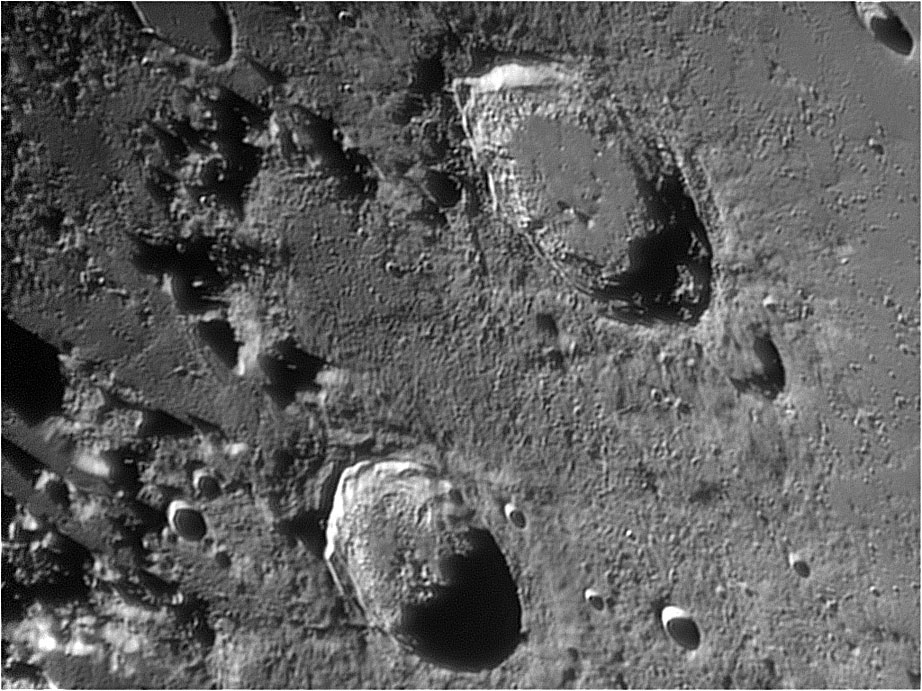|
|||||
|
et à l’est des apennins. Un arc de montagne joint Aristoteles au cratère Eudoxes plus au sud. Le cratère Mitchael (30 Km) est accolé à la muraille est. A l’ouest se situe le cratère inondé Egède (37 Km) de forme polygonale.
Aristoteles is a lunar impact crater that lies near the southern edge of the Mare Frigoris, and to the east of the Montes Alpes mountain range. To the south of Aristoteles lies the slightly smaller crater Eudoxus, and these two form a distinctive pair for a telescope observer. An arc of mountains between these craters bends to the west, before joining the walls. The smaller Mitchell crater is directly attached to the eastern rim of Aristoteles. To the west is the low, flooded Egede crater. Observers have noted the crater wall of Aristoteles is slightly distorted into a rounded hexagon shape. The inner walls are wide and finely terraced. The outer ramparts display a generally radial structure of hillocks through the extensive blanket of ejecta. The crater floor is uneven, and covered in hilly ripples. Aristoteles does possess central peaks, but they are somewhat offset to the south. |
|||||



